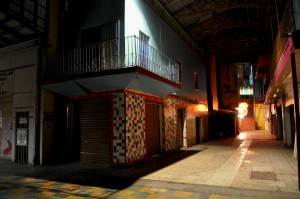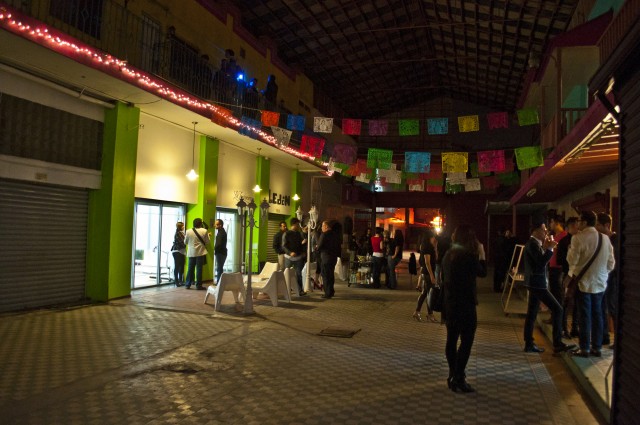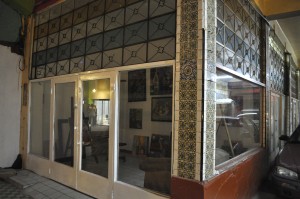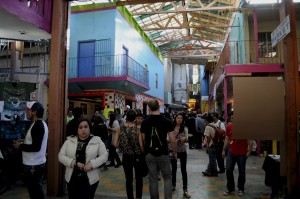When you think of art in downtown Tijuana, you think mostly of kitch. But Tijuana’s not what you think.
Tonight I stopped by Pasaje Gomez to check out a gallery opening and I felt like I was walking through the narrow streets of a quaint Italian village. The walls of most shops here are adorned with lovely traditional Mexican tile, and up above, small apartments open out onto charming wooden balconies.
Reactivating these forgotten spaces is one of the new development strategies for a 21st-century Tijuana situating itself in the global market of art & culture.
At its height, the famed Avenida Revolución boasted 3500 shops, providing jobs for some 15,000 workers, says Hector Santillan, proprietor of Plaza Madero. Today, 90% of these shops have closed.
Recent history suggests that Tijuana has suffered from national trends set in Mexico City and Washington D.C., blindsided by events and policies outside of its control.
According to Santillan, Mexican federal protectionist policies began to erode the free trade zone in Tijuana, policies Santillan calls an attempt to “Mexicanize” Tijuana. This put pressure on shops to sell products from Mexico and limited profits that could be made on other kinds of imports.
After 9-11, the United States reframed border crossing as an issue of national security. Places like San Ysidro Port of Entry, once lightly patrolled to prevent unauthorized immigration, were suddenly militarized. Massive border infrastructure walls, high tech surveillance and tracking mechanisms, and grumpy border agents now turn the U.S.-Mexico border into a space that appears threatening and dangerous. Long waits at the border discourage the easy day travel to Tijuana that once was so common for Los Angelenos and San Diegans.
In 2008 and 2009, the city was plagued by drug violence as two cartels vied for dominance and many innocent Tijuanenses were caught in the crossfire. The violence ended two years ago, in large part after the capture of a primary cartel leader in January 2010. But a media narrative continues to generate fear.
Two years ago, Pasaje Rodriguez opened up just across the street, and today, this arts & culture space is busy with hundreds of patrons on most nights of the week. The space hosts coffeshops, bookstores, galleries, a cervezeria with home brewed artisanal beer, and upstairs a book & record store/photography studio space where photographers meet up to share their work, groups meet for workshops on about digital cameras and photoshop techniques.
 Pasaje Gomez, open for just a few months now, is not far behind. Developers Miguel Buenrostro and Jaime Brambila envision spaces where collaborative projects can emerge among the artists, architects and videographers. Several galleries have already opened, and Buenrostro has plans to open a collaborative art/video space.
Pasaje Gomez, open for just a few months now, is not far behind. Developers Miguel Buenrostro and Jaime Brambila envision spaces where collaborative projects can emerge among the artists, architects and videographers. Several galleries have already opened, and Buenrostro has plans to open a collaborative art/video space.
You can find out more by checking the website Reactivando Espacios/Reactivating Spaces
Pasaje Gomez is located on the first floor level between 3rd and 4th Streets along Avenida Revolución, just below the Hotel Lafayette, in the heart of downtown Tijuana.
CLICK here for my PHOTOS on FLICKR
And here’s a video recounting the history of the old pasajes and plazas along Av. Revolución.
REACTIVANDO ESPACIOS 1/ HECTOR SANTILLAN M. from wimerf on Vimeo.



